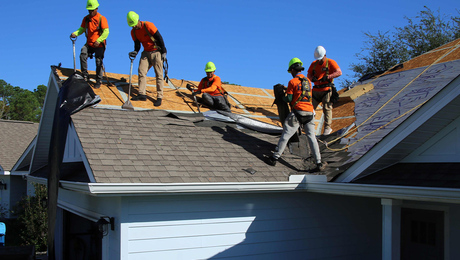What’s the Difference: Residential Fire Extinguishers
Units for class A, B, C, and K fires
 Kitchen safety. Most kitchen extinguishers, such as this white one, are BC units. Kidde, though, makes a kitchen fire extinguisher that has been tested to a new UL residential standard that covers vegetable and peanut oil specifically.
Kitchen safety. Most kitchen extinguishers, such as this white one, are BC units. Kidde, though, makes a kitchen fire extinguisher that has been tested to a new UL residential standard that covers vegetable and peanut oil specifically.
Quick action can prevent a small fire in a kitchen, bedroom, or garage from spreading and causing significant damage to a house. The best way to be prepared is to equip your home with several fire extinguishers. But merely having a fire extinguisher in a key place isn’t enough; you need to make sure that it’s the right type for the kind of fire most likely to occur there. Otherwise, you could make things worse.
Understanding the differences between fire extinguishers begins with understanding the different types of fire:
• Class A: paper, wood, textiles, rubber, and many plastics
• Class B: flammable liquids
• Class C: electrical wiring and equipment
• Class D: combustible metals (not relevant for residences)
• Class K: cooking oils and fats
Most of us know the classic class-A fire extinguisher from its presence in schools and other public buildings: It’s made of stainless steel, holds 2.5 gal. of air-pressurized water, and can be refilled and reused many times. Because water is conductive, though, using a class-A extinguisher to fight an electrical fire could result in electrocution. A class-A unit also is the wrong tool to use for extinguishing a flammable-liquid fire; the pressurized stream of water it shoots can propel a burning liquid toward a new source of fuel. For those reasons, plus the fact that a filled class-A unit weighs about 25 lb., these extinguishers typically are not found in homes.
The most common units found in homes are rated for classes A, B, and C and weigh between 7 lb. and 10 lb. Made of aluminum and usually painted red, they contain monoammonium phosphate powder as the extinguishing agent. Their pressurizing agent isn’t air but nitrogen, which carries no moisture and so won’t clog up the powder. While great at suppressing small household fires, ABC extinguishers leave a dusty mess to clean up. If you don’t clean up the mess immediately and moisture is present, the dust may corrode metal surfaces.
Choosing the right extinguishers for your home
Now that you’re armed with this information on class ratings, let’s say that you arrive at your local home center or hardware store ready to purchase a class-K fire extinguisher for your kitchen and an ABC extinguisher for each floor of your house. To your dismay, you find that there are no units with a class-K rating and that the ratings for the ABC units are a confusing jumble of numbers, letters, and punctuation.
The reason you can’t find a class-K extinguisher is that these units are designed for restaurants and other commercial kitchens and have only recently been finding their way into residential kitchens. If you have a busy kitchen, particularly one with a deep fryer, you may want to shop online for a class-K unit. Similar in look to class-A extinguishers, class-K units are known as wet-chemical extinguishers because they discharge a chemical mix in liquid form.
Most extinguishers marketed for kitchen use are BC units, which discharge a sodium bicarbonate–based mix that’s easy to clean up. This dry chemical is effective at extinguishing fires in shallow pots and pans, which is where a residential kitchen fire is most likely to start.
If you already have the proper fire extinguishers in your house, don’t congratulate yourself yet. Single-use units have a limited life span, and rechargeable units need to be emptied, refilled, and recharged every few years. Follow the manufacturer’s instructions to ensure that if you have to fight a small fire in your home, you’ll have a working tool at the ready.
What about those weird ratings?
Take the example in the photo. The first thing to notice is that it contains the letters A, B, and C, which means that it meets the requirements for fighting class A, B, and C fires. The colons are separators, so divide this rating into three parts: “1-A,” “10-B,” and “C.” A class-A fire can be fought with water, so the number before the “A” indicates the unit’s water equivalency, with “1” being equal to 1.25 gal. (A “2-A” unit is equal to 2.5 gal. and so on.) The number before the “B” indicates the square footage the unit can cover when fighting a class-B fire. The “C” simply indicates that the unit can be used to fight an electrical fire.
Photos: Rodney Diaz



























